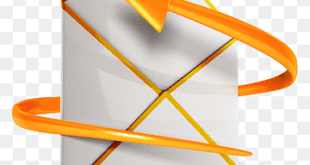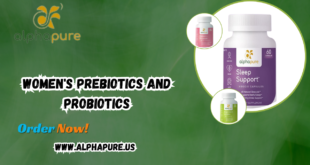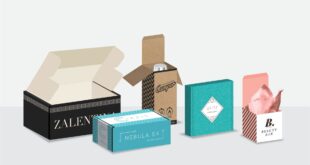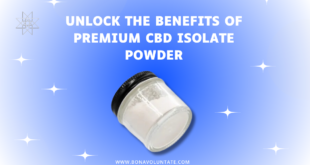In today’s saturated market, where countless brands vie for consumer attention, standing out has become more challenging than ever. It’s not just about having a great product; how you present that product to your audience can be the difference between success and obscurity. This is where custom product packaging comes into play. Far beyond mere protective coverings, custom packaging is a powerful marketing tool that can significantly boost your brand’s marketability, influence consumer behavior, and foster brand loyalty.
Understanding Custom Product Packaging
Custom product packaging is more than just a box or a wrapper; it’s a direct extension of your brand’s identity. When we talk about custom packaging, we refer to packaging specifically designed and tailored to reflect your brand’s unique attributes. This could involve everything from choosing the right materials that resonate with your brand’s values to incorporating distinctive design elements like your logo, brand colors, and typography.
Custom product packaging allows you to create a consistent and cohesive brand experience. When done right, it not only protects your product but also enhances its perceived value, making it more attractive to consumers. In essence, custom packaging is about creating a memorable unboxing experience that leaves a lasting impression on your customers. This first interaction is crucial as it sets the tone for how your brand will be perceived.
The Impact of Custom Product Packaging on Brand Marketability
The influence of packaging on consumer decisions cannot be understated. Packaging is often the first physical interaction a customer has with your brand, and this initial encounter can shape their perception and influence their purchasing decision. Consumers are not just buying a product; they are buying the experience that comes with it. Custom product packaging can make your product stand out on crowded shelves, grab attention online, and create an emotional connection with your audience.
Psychologically, humans are wired to respond to visual stimuli, and packaging design plays a significant role in this process. For instance, the colors used in your packaging can evoke certain emotions and associations. A well-designed package can communicate the quality and value of the product inside, even before the customer opens it. This perceived value is crucial as it can justify a higher price point and encourage impulse buys.
Moreover, custom packaging can foster brand loyalty. When consumers have a positive experience with your packaging, they are more likely to remember your brand and return for repeat purchases. The tactile and visual elements of the packaging create a multi-sensory experience that can enhance brand recall. In a market where consumers are bombarded with choices, memorable packaging can be a deciding factor in whether they choose your brand over another.
Key Elements of Effective Custom Product Packaging
To maximize the impact of custom product packaging, it’s essential to incorporate design elements that enhance brand recognition. One of the most critical aspects of packaging design is the consistent use of your brand’s visual identity. This includes your logo, color scheme, typography, and other brand elements that help distinguish your product from competitors.
Logo placement is particularly important in packaging design. Your logo should be prominently displayed, ensuring it is easily visible and instantly recognizable. The color scheme of your packaging should align with your brand’s colors, creating a cohesive look that reinforces brand identity. Typography, too, plays a crucial role in conveying your brand’s personality. The fonts you choose should reflect the tone and style of your brand, whether that’s modern and sleek or classic and elegant.
Another key element is the overall aesthetics of the packaging. The design should be visually appealing and relevant to your target audience. For instance, a luxury brand might opt for minimalist packaging with high-end finishes, while a fun and youthful brand might choose vibrant colors and playful graphics. The goal is to create a package that not only protects the product but also enhances its appeal.
Additionally, the functionality of the packaging should not be overlooked. While aesthetics are important, the packaging must also be practical and user-friendly. It should protect the product during transit and storage while being easy to open and reseal if necessary. Balancing aesthetics with functionality ensures that the packaging meets both the emotional and practical needs of the consumer.
Benefits of Custom Product Packaging for Marketability
Custom product packaging offers a myriad of benefits that directly contribute to your brand’s marketability. One of the primary advantages is brand differentiation. In a market flooded with similar products, custom packaging allows you to stand out and make a lasting impression on consumers. It differentiates your product from the competition, making it more likely to catch the eye of potential buyers.
Furthermore, custom packaging enhances customer experience, which is crucial for building brand loyalty. The unboxing experience has become an integral part of the overall customer journey. A thoughtfully designed package can create a sense of anticipation and excitement, making the product feel more special. This positive experience can lead to repeat purchases and word-of-mouth referrals, both of which are invaluable for brand growth.
Another significant benefit is the ability to position your brand in the market effectively. Custom packaging allows you to align your product with your brand’s values and target audience. For example, if your brand is eco-conscious, using sustainable packaging materials can reinforce this message and attract environmentally conscious consumers. Similarly, if your brand is positioned as a premium option, high-quality packaging can convey this status and justify a higher price point.
Moreover, custom packaging can be a powerful tool for storytelling. Through the use of design elements, messaging, and even the choice of materials, you can tell your brand’s story and communicate its values to consumers. This storytelling aspect can create a deeper connection with your audience, making them more likely to engage with your brand on a personal level. More
Case Studies: Successful Brands Using Custom Product Packaging
Several leading brands have leveraged custom product packaging to elevate their market presence and enhance their marketability. Let’s take a closer look at a few examples:
- Apple: Apple’s packaging is a prime example of how custom packaging can reinforce brand identity. The sleek, minimalist design of Apple’s packaging reflects the brand’s commitment to simplicity and innovation. The unboxing experience is meticulously crafted to create a sense of anticipation and excitement, which has become synonymous with Apple products. This attention to detail in packaging has helped Apple maintain its premium image and foster strong brand loyalty.
- Glossier: Glossier, a beauty brand, has effectively used custom packaging to build a strong connection with its target audience. The brand’s packaging is fun, playful, and reflects its millennial and Gen Z customer base. Glossier’s iconic pink bubble wrap pouches have become a signature element, contributing to the brand’s recognition and marketability. The packaging not only protects the products but also enhances the overall brand experience, making customers feel like they are receiving a personalized gift.
- Lush: Lush, a cosmetics brand known for its ethical and sustainable practices, uses custom packaging to communicate its brand values. The brand’s commitment to sustainability is reflected in its use of recycled and recyclable materials. Lush’s packaging is simple yet effective, with minimalistic designs that allow the products to speak for themselves. This approach resonates with environmentally conscious consumers and reinforces Lush’s position as a leader in ethical beauty.
These examples demonstrate how custom product packaging can be a powerful tool for enhancing brand marketability. By aligning packaging with brand values and target audience preferences, these brands have successfully differentiated themselves in the market and created memorable customer experiences.
How to Start with Custom Product Packaging
Creating custom product packaging that effectively enhances your brand’s marketability involves several key steps. The first step is to define your brand’s packaging needs and objectives. Consider what message you want your packaging to convey and how it aligns with your overall brand strategy. Think about your target audience and what elements will resonate with them.
Once you have a clear understanding of your objectives, the next step is to create a design brief. This brief should outline your brand’s visual identity, including your logo, color scheme, typography, and any other design elements that are important to your brand. It should also include details about the product, such as its size, shape, and any specific packaging requirements.
With the design brief in hand, you can begin working with a packaging designer to create a prototype. This is where you can experiment with different materials, finishes, and design elements to see what works best for your brand. It’s important to consider both the aesthetics and functionality of the packaging. The design should be visually appealing and aligned with your brand’s identity, while also being practical and user-friendly.
After finalizing the design, the next step is to select a reliable supplier to produce the packaging. It’s crucial to choose a supplier who can deliver high-quality packaging that meets your specifications. Consider factors such as production capacity, lead times, and cost when selecting a supplier. It’s also a good idea to request samples before placing a large order to ensure the quality and accuracy of the packaging.
Finally, once the packaging is produced, it’s important to test it with your target audience. Collect feedback to see how the packaging is received and make any necessary adjustments before a full-scale launch. This step is crucial in ensuring that the packaging resonates with your audience and effectively enhances your brand’s marketability.
Challenges and Solutions in Custom Product Packaging
While custom product packaging offers many benefits, it also comes with its own set of challenges. One of the most common challenges is managing costs. Custom packaging can be more expensive than standard packaging, particularly if you are using high-quality materials or complex designs. However, there are ways to mitigate these costs. For example, you can choose cost-effective materials that still reflect your brand’s values, or opt for simpler designs that are easier and cheaper to produce.
Another challenge is the design process itself. Creating a design that effectively captures your brand’s identity and resonates with your target audience can be a complex and time-consuming process. It’s important to work closely with your packaging designer and provide clear guidance throughout the process. Regular communication and feedback can help ensure that the final design meets your expectations and effectively enhances your brand’s marketability.
Material sourcing can also be a challenge, particularly if you are looking for sustainable or specialized materials. It’s important to work with suppliers who understand your requirements and can deliver materials that meet your specifications. Building strong relationships with your suppliers can help ensure a smooth production process and high-quality results.
The Future of Custom Product Packaging
As consumer expectations continue to evolve, the future of custom product packaging will likely be shaped by trends such as sustainability, personalization, and technology integration. Sustainability is already a major focus for many brands, and this trend is expected to continue as consumers become more environmentally conscious. Brands that prioritize sustainable packaging solutions will likely have a competitive advantage in the market.
Personalization is another trend that is gaining traction. Consumers are increasingly looking for products that feel unique and tailored to their individual preferences. Custom packaging that offers a personalized touch, such as customizable labels or limited-edition designs, can help brands stand out and create a deeper connection with their audience.
Technology is also playing a growing role in packaging design. Innovations such as smart packaging, which integrates technology to provide additional information or enhance the customer experience, are becoming more popular. For example, packaging that includes QR codes or NFC tags can offer interactive elements, such as augmented reality experiences or product information.
As these trends continue to evolve, brands that stay ahead of the curve and embrace new opportunities in custom product packaging will be better positioned to enhance their marketability and succeed in an increasingly competitive market.
Conclusion
Custom product packaging is a powerful tool that can significantly enhance your brand’s marketability. By creating packaging that reflects your brand’s identity, resonates with your target audience, and offers a memorable unboxing experience, you can differentiate your product from the competition and create lasting connections with your customers. While custom packaging presents certain challenges, the benefits it offers in terms of brand recognition, customer loyalty, and market positioning make it a worthwhile investment. As consumer expectations continue to evolve, brands that prioritize custom packaging solutions will be better equipped to meet these demands and thrive in the market. Visit customproductpackaging.com for more info.
 Personal Finance and Attractive Interest Rates Unlock Smart Savings with Low Rates and Expert Financial Tips
Personal Finance and Attractive Interest Rates Unlock Smart Savings with Low Rates and Expert Financial Tips







